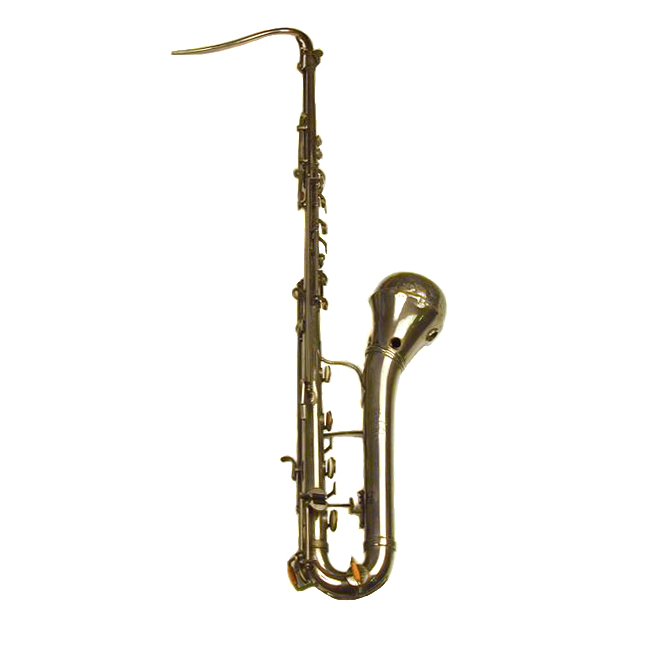Rothphone
Woodwinds
Europe
Between 1001 and 1900 AD
The rothphone is a unique double-reed wind instrument that combines elements of the sarrusophone and saxophone, characterized by its metal construction and conical bore. Invented in the late 19th century, the rothphone serves a specific role in military and concert bands, providing a distinctive sound that enhances various musical compositions.
Description and Historical Origin
The rothphone features a design similar to that of the saxophone but maintains the conical bore profile typical of double-reed instruments. It is constructed primarily from brass and has a range of sizes, including soprano, alto, tenor, baritone, and bass models. The instrument is equipped with a double reed that produces a powerful sound, making it suitable for outdoor performances. The rothphone was invented by Ferdinando Roth, a German instrument maker who worked in Milan, Italy. It was initially named the rothcorno before being officially recognized as the rothphone. The instrument gained popularity in Italian military bands during the early 20th century, particularly between World War I and World War II. Despite its initial success in Italy, the rothphone remained relatively unknown outside the country.
Characteristics and Working Mechanism
The rothphone’s construction includes a metal body with an upturned bell, which contributes to its bright and penetrating tone. The instrument typically has seven finger holes and uses a key system similar to that of the saxophone, allowing for agile fingering and pitch variation. The working mechanism involves air being blown into the mouthpiece fitted with a double reed. When air passes through the reed, it vibrates against itself to produce sound waves that resonate through the conical body of the instrument. Players can manipulate pitch by covering or uncovering finger holes along the body. This design allows for a wide dynamic range from soft tones to powerful blasts.
Types of Rothphones
The rothphone family includes several types based on size and pitch:
Soprano Rothphone: Tuned in B♭, this variant is designed for higher pitches.
Alto Rothphone: Tuned in E♭, it provides a mid-range voice.
Tenor Rothphone: Also tuned in B♭, this type offers deeper tones.
Baritone Rothphone: Tuned in E♭, it serves as a lower-pitched option.
Bass Rothphone: Tuned in B♭, this variant produces very low pitches.
Each type corresponds in range to similar-sized sarrusophones or saxophones and is notated in treble clef.
Features and Significance
The rothphone is distinguished by several key features:
- Typically made from brass or other metals that enhance durability and tonal quality.
- Known for its loud and bright tone that can project over large ensembles.
- The fingering is nearly identical to that of the saxophone, making it accessible for players familiar with that instrument.
Cultural Significance
While not as widely recognized as other woodwinds, the rothphone remains an important part of military band repertoire and has historical significance in orchestral music.
The rothphone, while lesser-known compared to other woodwind instruments, holds notable cultural and historical significance, particularly in the context of military bands and orchestral music. Its powerful and reedy tone, resembling a cross between a saxophone and a bassoon, made it a valuable addition to military band repertoires, where its robust sound could project effectively outdoors. Historically, composers have included the rothphone in orchestral works for its distinctive tonal qualities, adding depth and character to ensembles. Although its use has waned over time, the rothphone serves as a fascinating example of innovation in instrument design, reflecting the evolving needs of musicians and composers in the 19th and early 20th centuries.
It is rothphone is an intriguing instrument with a rich history and distinct characteristics. Although it never achieved mainstream popularity like some of its woodwind counterparts, its unique sound and versatility ensure its continued relevance in specific musical contexts today. Its design reflects an innovative blend of traditional double-reed mechanics with modern brass construction, making it a valuable addition to contemporary ensembles.
FAQ
What is the Rothphone and its Origin?
The Rothphone is a metal double-reed wind instrument that was invented by Friedrich Roth in the late 19th century. It is similar to the sarrusophone but has a shape resembling that of a saxophone. The instrument was primarily manufactured in Italy and was designed to replace oboes and bassoons in military bands, gaining some popularity in Italian wind ensembles during the early 20th century.
How is the Rothphone Constructed?
The Rothphone features a conical bore and is made from brass or other metals. It has several finger holes for pitch control and utilizes a double reed mounted on a metal mouthpiece. The instrument is available in different sizes, including soprano, alto, tenor, and baritone, each corresponding to similar-sized sarrusophones or saxophones, and is notated in treble clef.
What Role Does the Rothphone Play in Modern Music?
In modern music, the Rothphone is primarily used in historical performance ensembles focusing on early 20th-century compositions. While it is not widely recognized outside of Italy, it occasionally appears in folk music settings and military bands. Its unique sound can add a distinctive color to musical arrangements, although it remains less common than other woodwind instruments.
 Links
Links
References
Other Instrument
Categories


















